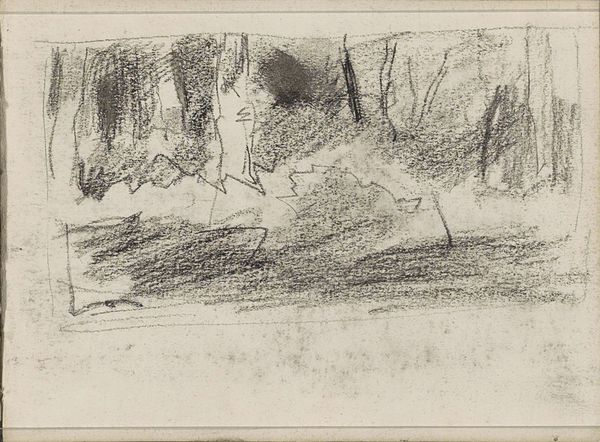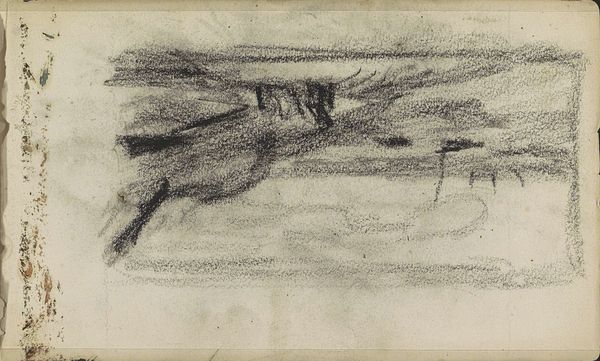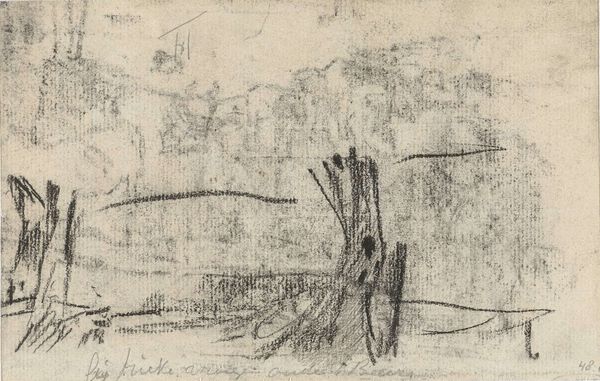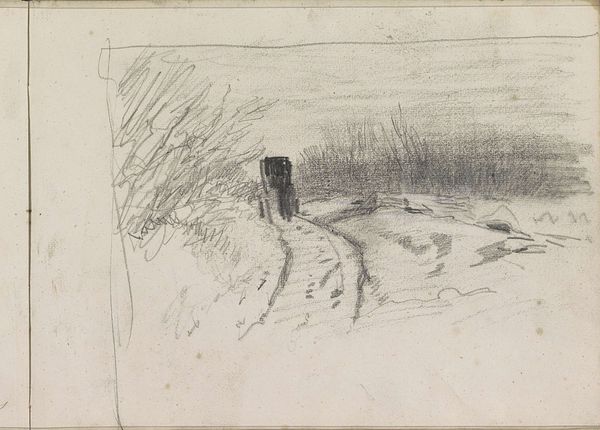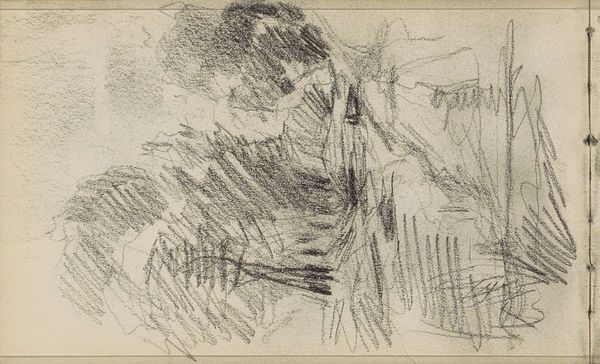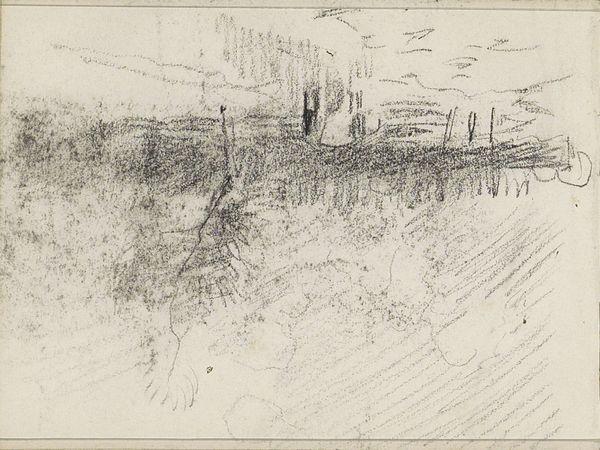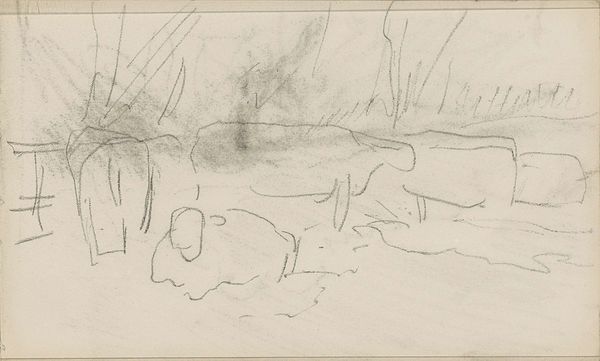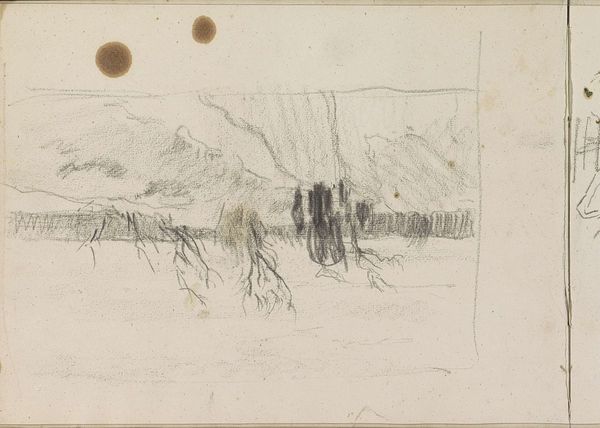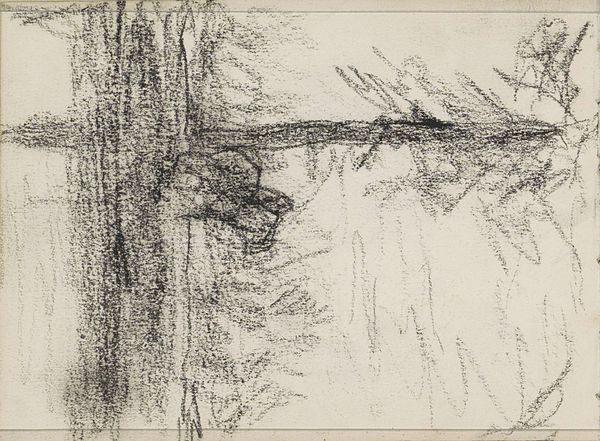
drawing, pencil
#
drawing
#
animal
#
dutch-golden-age
#
impressionism
#
pencil sketch
#
landscape
#
pencil
#
horse
#
realism
Copyright: Rijks Museum: Open Domain
Editor: We are looking at Anton Mauve’s "Trekpaard op een landweg," dating from sometime between 1848 and 1888. It's a pencil drawing currently held at the Rijksmuseum. The sketch appears unfinished, almost fleeting, but there's a definite emphasis on the solidity of the horse. What catches your eye in this composition? Curator: Immediately, the structural integrity established by the repetitive strokes draws me in. Observe how Mauve uses dense, directional hatching to define the horse's form, contrasting with the more sparse and linear marks used for the landscape. This contrast, between form and field, sets up a play between figure and ground. Editor: It's interesting that you mention the directional hatching. Does that technique highlight the texture of the paper, creating another layer to the structure? Curator: Precisely. The texture of the paper itself becomes integrated into the overall composition. Note how the undefined shapes on the top plane suggest atmospheric perspective. The marks themselves function as signs; lines signify form, absence implies distance. Do you see how this reduces a complex reality to its core visual components? Editor: I see it now. It's like Mauve is stripping away unnecessary detail to expose the underlying visual language of the scene. Curator: Precisely. This sketch, therefore, invites us to decode Mauve’s methods. What can you infer from it? Editor: I see how looking at the materiality of the artwork, pencil on paper, makes you consider the techniques, style, and structural elements – it all interlocks. Curator: Exactly. It reminds us that close visual examination unlocks meaning.
Comments
No comments
Be the first to comment and join the conversation on the ultimate creative platform.

